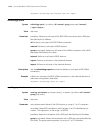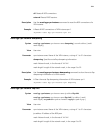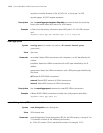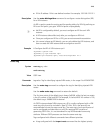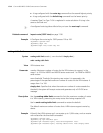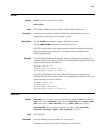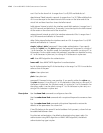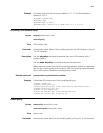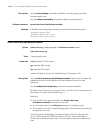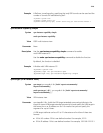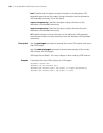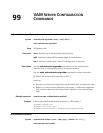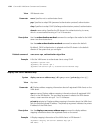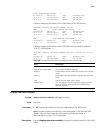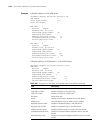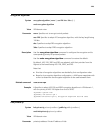
1718 CHAPTER 98: MPLS L3VPN CONFIGURATION COMMANDS
Description Use the tunnel-policy command to establish a tunneling policy and enter
tunneling policy view.
Use the
undo tunnel-policy command to delete a tunneling policy.
Related command: tunnel select-seq load-balance-number.
Example # Establish a tunneling policy named po1 and enter tunneling policy view.
<Sysname> system-view
[Sysname] tunnel-policy po1
[Sysname-tunnel-policy-po1]
tunnel select-seq load-balance-number
Syntax tunnel select-seq { cr-lsp | gre | lsp }* load-balance-number number
undo tunnel select-seq
View Tunneling policy view
Parameter cr-lsp: Specifies CR-LSP tunnels.
gre: Specifies GRE tunnels.
lsp: Specifies LSP tunnels.
number: Number of tunnels for load balancing, in the range 1 to 8.
Description Use the
tunnel select-seq load-balance-number command to configure the
preference order for tunnel selection and the number of tunnels for load
balancing.
Use the
undo tunnel select-seq command to restore the default.
By default, one LSP tunnel can be used. That is, only LSP tunnels can be used and
the number of tunnels for load balancing is 1.
Note that:
■ Only tunnels of the types specified in the tunnel select-seq
load-balance-number command can be used.
■ A tunnel type closer to the select-seq keyword has a higher priority.
■ The number of tunnels for load balancing refers to the number of tunnels that
an application can use.
CR-LSP tunnels are preferred by the following order: CR-LSPs configured with
ACLs, CR-LSPs bound with VPN, and ordinary CR-LSPs. These three types of
CR-LSPs are mutually exclusive, that is, only one type of the three is selected at a
time.



